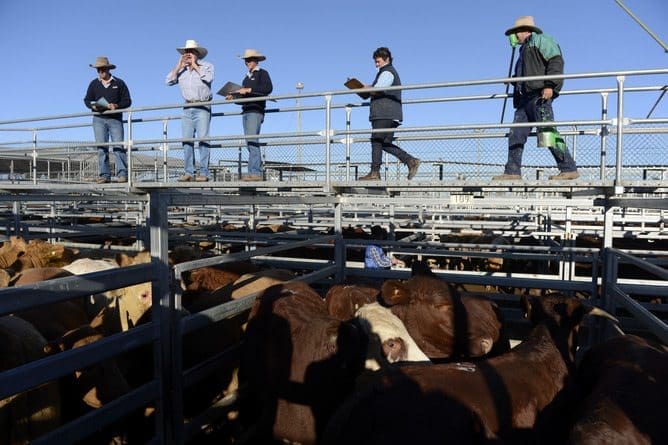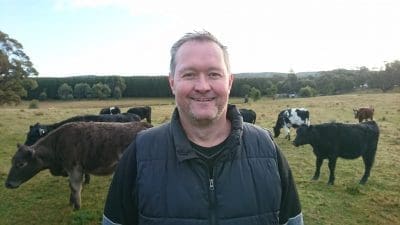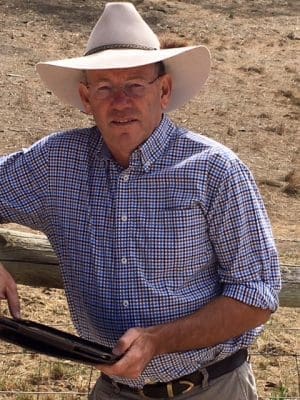
The Eastern Young Cattle Indicator’s charge through the 1000c/kg mark is rewriting the record books and confounding market forecasters. Dan Peled/AAP
“It’s tough to make predictions, especially about the future,” counsels one often-cited quote.
At a time when many forecasters seem to opt for the vague and timid “mainly fine with a chance of rain” approach, allowing sufficient wriggle room to claim success whatever the outcome while offering information of no value to anyone, it’s refreshing to find analysts still prepared to stick out their necks and make bold, precise predictions.
Just over a month ago on The Weekly Grill podcast Kerry Lonergan asked beef industry analysts Matt Dalgleish from Thomas Elder Markets and Chris Howie from StockCo to pinpoint where they thought the Eastern Young Cattle Indicator would peak.
Both nominated a figure of around 950c/kg, which, as we now know with the benefit of hindsight, proved to be short of where the young cattle index has since charged to – smashing into 1000c/kg territory last week.
 On Friday Kerry revisited with the duo to ask for their thoughts on what has happened since they last spoke, noting that “most of the rules appear to have gone out the window”.
On Friday Kerry revisited with the duo to ask for their thoughts on what has happened since they last spoke, noting that “most of the rules appear to have gone out the window”.
Matt agreed, pointing out that while it is a fairly uncommon scenario for an indicator to force its way through and well above the top of a historic trend chart, it indeed can happen.
“It does happen, the lines aren’t reinforced in concrete, it can get across and certainly has,” he said.
He said the rally in the heavy steer price indicator in particular had taken him by surprise, which has helped to fuel the confidence of restockers to continue paying more for young cattle.
“I think now they’re (heavy steers) sitting at 430c/kg liveweight or there abouts on the national indicator, that is obviously giving a lot of confidence to restockers that they’re going to be able to turn off at fairly good prices.”
A key distinction he pointed to in the feeder space at present involves the difference in margin according to length of time on feed.
“There is still probably margin in that longer held trade, I think that is where the market is heading towards in the feeder space, holding them for a bit longer, (but) certainly in the shorter length trades I think there is not a lot of money left in it.”
Unprecedented spread between EYCI and 90CL

Matt Dalgleish
A further point of difference in the market was the difference the spread between the 90CL and the EYCI, which the Thomas Elder Markets team homed in on in an article last week.
“Generally price-wise they tend to run together, unless there are times like severe drought or decent restocking like we’re seeing now,” he said.
This year the spread has widened to its widest level on record, with the EYCI now 200c/kg higher than the 90CL price.
“So we’re at massive levels above, even with export markets firing again and those excellent markets rising, we’re still seeing prices here that are going beyond that as well.”
With rises in export beef prices still being outpaced by rises in the price of cattle in Australia Matt said it was difficult to see how these price levels could persist long term.
“Lock in”
Chris Howie said the one thing that will change in Australia is “heat”, and urged producers with stock to lock in prices where they can.
“When we hit summer and the feed stops growing is normally when you see a reset of market,” he said.

Chris Howie
“We’re far enough into the winter now, supply is the issue, we saw cows making $3.90 at Barnawatha this week – that cow is cast for age and she is bringing back over $3000.”
“…anyone who has got numbers start locking the price and I mean that, start looking for a lock-in price August, mid September.
“It will be at a discount to what the current market is, but take the money, lock it in.
“Whether you lock in 40-50pc of your turnoff and play the market with the rest I don’t care, but it would be foolish not to be looking at taking a forward price.
“I think when we do see supply, and I don’t think we’ll see it probably until early October, that the EYCI will run off extremely quickly then and I would say it will head back towards $9.”
Asked for his prediction on where the EYCI is likely to stand mid-September, Matt said that while the recent movement of the indicator had “blown me out of the water somewhat”, it was difficult to see it continuing to surge higher.
That said, he pointed out that he was surprised when he ran some numbers looking at the lighter end of the EYCI, to ascertain how much people could pay on the current market if they were buying lighter cattle.
That exercise produced a figure of 1070c/kg.
“I was goggle eyed at that, and I thought.. surely we can’t see it as high as that,” he said.
“But now we’re in this uncharted territory from a chart perspective, there isn’t really any chart point I can pull out and say that is a fair and reasonable level.
“But if I go back to the economics I think once it gets past that, and that is assuming you can turn that animal off for above $4, beyond 1070-1080c it starts to become really super risky trading.”
HE said that at any stage we could still see the market head south, and nominated an EYCI level of around 980c/kg as the position in mid-September.
To listen to the whole podcast click here

HAVE YOUR SAY